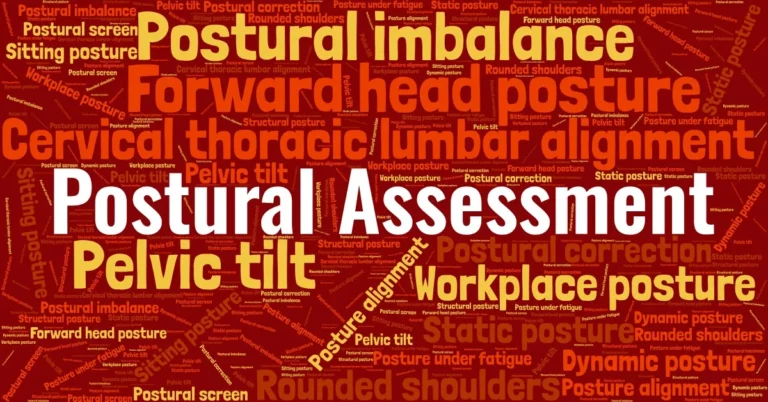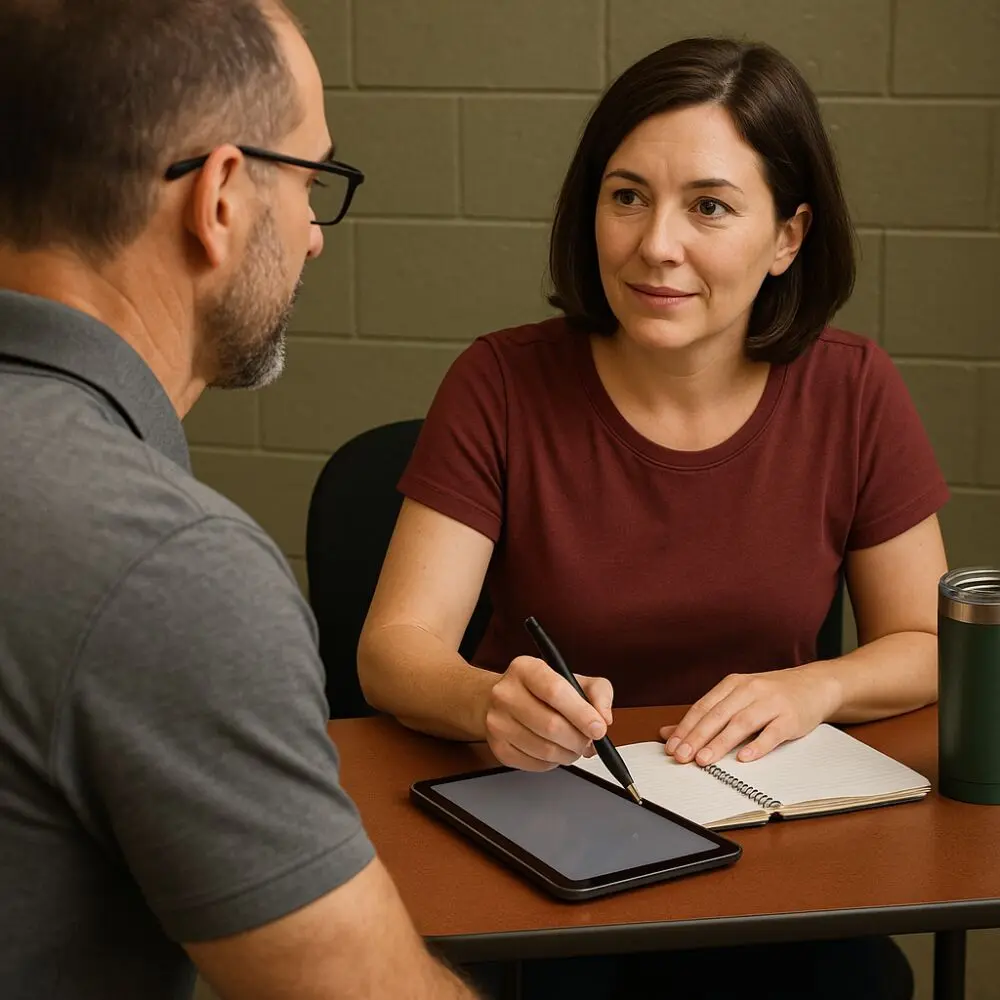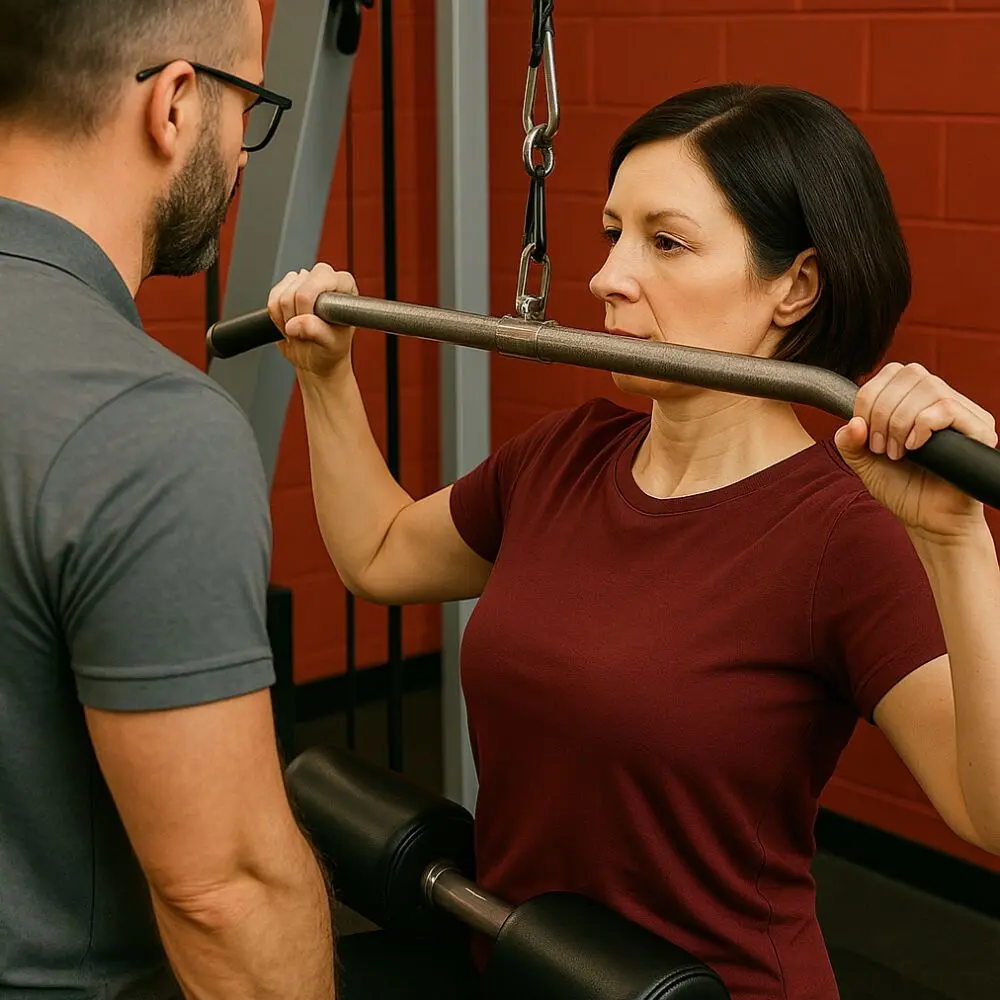Find the Postural Habits Behind Your Pain and Fatigue
Postural Assessment
Your posture affects more than your spine. It influences breathing, strength, and how forces travel through your joints. We evaluate your static and dynamic posture to correct patterns that create fatigue, tension, and injury.

Desk Workers
Prolonged sitting creates spinal and shoulder strain—this shows how to fix it.
Chronic Pain Clients
Posture breakdown may be causing your recurring back, hip, or neck issues.
Active Adults
Poor posture limits performance—especially under load or fatigue.
How Poor Posture Affects Your Movement and Pain
You don’t have to be hunched over to have posture problems. Modern life—sitting, screens, stress—shifts your body out of alignment. Over time, those subtle shifts become chronic pain, tension, or reduced mobility that no amount of stretching or “core work” fixes.
- Prolonged sitting weakens stabilizing muscles, leading to forward head, rounded shoulders, and lower back strain.
- You might notice aches, fatigue, or stiffness—but the root cause is often unseen postural stress.
- Correcting posture improves not just appearance but function, breathing, joint load, and body mechanics.


What We Look For in a Postural Analysis
Posture isn’t just about appearance — it reflects how well your body handles stress, load, and alignment in real life. We evaluate posture in both stillness and motion to reveal dysfunctions that contribute to pain, fatigue, and movement limitations.
Static Postural Alignment in Key Areas
First, we assess how your body holds itself when standing. This shows us chronic misalignments that influence everything from joint stress to breathing.
-
Head, neck, and shoulders: forward head posture, rounded shoulders, and abnormal cervical-thoracic curves
-
Spine and pelvis: excessive lumbar curve, swayback, and anterior or posterior pelvic tilt
-
Lower body alignment: uneven hips, knock knees or bow legs, foot pronation or supination
Dynamic Posture Under Movement
Then we observe how your posture changes while you move — revealing where stability breaks down under load or repetition.
-
Load response: how your posture adapts (or breaks down) during squats, reaching, or walking
-
Fatigue compensation: slouching or imbalance that emerges under repetition or resistance
-
Core and balance control: signs of poor trunk control, asymmetry, or shift strategies
Patterns That Indicate Dysfunction or Risk
Finally, we identify patterns linked to injury risk or recurring pain — so we can address root causes, not just symptoms.
-
Common dysfunctions: Upper Crossed Syndrome, Lower Crossed Syndrome, “desk posture” distortions
-
Pain generators: neck tension, back strain from tilt, or knee pain linked to postural collapse
-
Movement inefficiencies: posture faults that increase injury risk or energy waste during activity
What are the most common postural dysfunction patterns?
Common postural dysfunctions include forward head posture, rounded shoulders, anterior pelvic tilt, and exaggerated spinal curves. These patterns contribute to joint strain, poor alignment, neck tension, and long-term pain if left uncorrected.
-
Forward head posture can strain the neck and upper back.
-
Rounded shoulders reduce shoulder mobility and breathing efficiency.
-
Pelvic tilt affects low back loading and gait efficiency.
-
Excessive spinal curvature disturbs weight distribution and balance.
📌 Postural issues aren’t just cosmetic — they create real mechanical stress across your kinetic chain.
-
Can poor posture really cause long-term pain or fatigue?
Yes. Poor posture disrupts how your body absorbs force, distributes weight, and stabilizes joints. Over time, this can lead to fatigue, overuse injuries, and chronic pain — especially in the neck, shoulders, lower back, and hips.
-
Constant misalignment increases joint stress and muscle overwork.
-
Poor posture affects energy use and breathing mechanics.
-
Symptoms often include tight traps, low back soreness, and tiredness from standing or sitting too long.
📌 Even small postural faults, repeated daily, can lead to big pain over time.
-
How are corrective exercises chosen for posture problems?
Corrective exercises are selected based on your personal postural assessment. Your kinesiologist looks at alignment, compensation patterns, and core control to build a plan that restores balance and retrains your posture automatically.
-
Exercises are matched to your specific muscle imbalances.
-
Focus is on retraining deep stabilizers, not just stretching tight areas.
-
Goals include rebalancing posture, restoring spinal alignment, and rebuilding control.
📌 It’s not about doing more stretches — it’s about fixing how your body holds itself, even at rest.
-
A Simple 3 Step Process
No Guesswork, just results
Getting started is simple – if your posture is affecting how you move, work, or feel day-to-day, I’ll show you exactly where the breakdown is and what to do about it.
Choose the Assessment That Fits You Best
tools that actually tell us something
Understanding how your body moves is step one. These science-backed assessments reveal dysfunction, imbalance, or asymmetry—so your program is based on facts, not guesses.
Comprehensive Movement Assessment
Biomechanical Assessment
Core Stability Assessment
Gait Analysis
Functional Movement Assessment
Muscle Activation Testing
Fix the Foundation, Finally
If you’re feeling stiff, sore, or unsure whether your posture is causing bigger issues — you’re not alone. Many of my clients come in thinking they just need to stretch more, when really, their body is working around misalignment it’s not built to handle.
With over 15 years as a kinesiologist, I assess posture through a clinical lens — looking at joint angles, load compensation, and how you hold yourself throughout the day. We use your real posture data to design exercises that restore symmetry, reduce strain, and make movement feel natural again.





